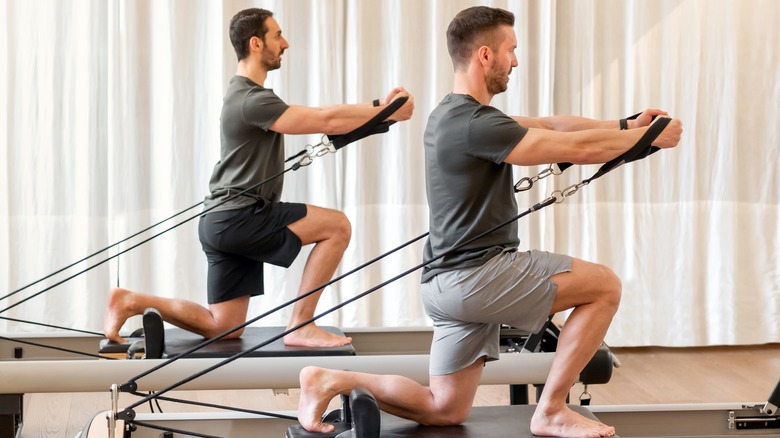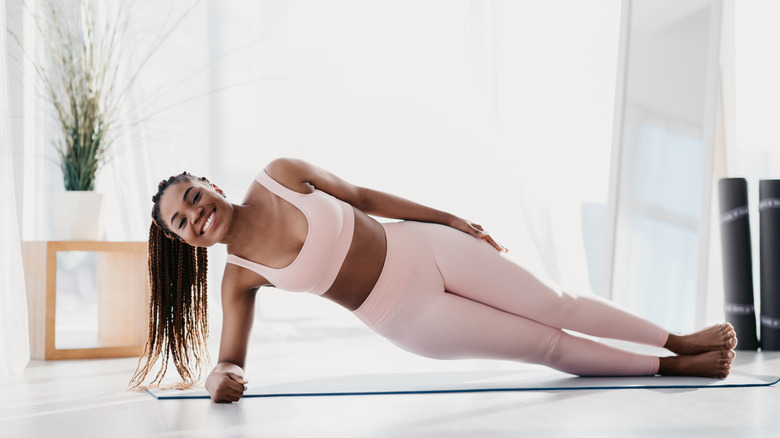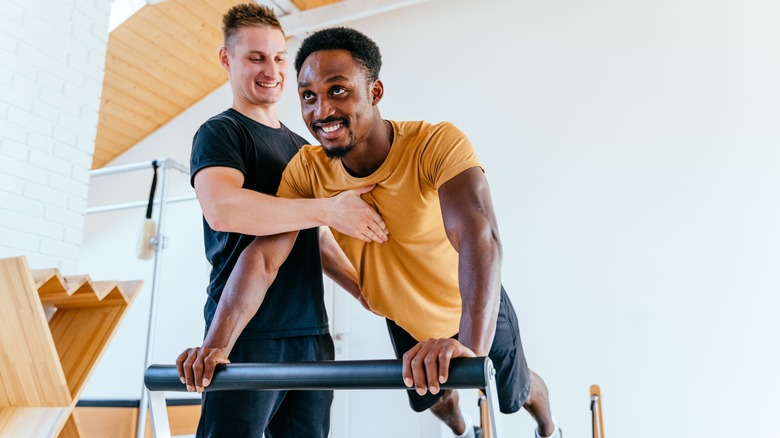Can Pilates Help Reduce Lower Back Pain?
For over a century, Pilates has been a method of exercise used for rehabilitation, medical treatment, and physical activity, as well as being a part of wellness regimens, reports Cleveland Clinic. Named after the creator of the fitness method, Joseph Pilates, Pilates was developed to rehabilitate injuries faced by dancers.
The very foundation of Pilates is rooted in increasing flexibility, strengthening core muscles, and incorporating mindfulness through deep, intentional breathing. Pilates is also heavily focused on developing the strength and stability of muscles in the lower back. This, in combination with the creation of the Pilates method for injury rehabilitation, makes it an enticing practice for those who wish to lessen low back pain.
Back pain is a very common ailment experienced by adults, whether it is acute pain that can be healed within a specific timeframe or chronic pain that is persistent and long-term. According to the Health Policy Institute at Georgetown University, approximately 8% of adults endure chronic back pain that affects their quality of life. Additionally, 65 million adults are reported to have experienced recent back pain.
The pervasiveness of back pain and its effects on daily life, such as missed days at work or limitations in movement, can be devastating to live with regularly. For those with lower back pain, the pursuit of reducing pain may frequently feel frustrating and unobtainable at times. Everyone's experience with back pain is different, but for many people, there may be relief that can be found in practicing Pilates.
Different types of Pilates are available for back pain
Since Pilates emphasizes controlled movements and breathing in conjunction with strengthening muscles in the abdomen and lower back, it can be an effective fitness regimen for those with low back pain (via HSS). Pilates is aimed at identifying the spine by each individual vertebra and creating strength in the muscles that stabilize the spine and abdominal core. The reduction of lower back pain that can be a result of practicing Pilates stems from the focus on increasing spinal mobility, flexibility, and relaxation. Pilates also focuses on decreasing muscle tension, tightness, and joint stiffness, which can further reduce lower back pain.
There are several ways to practice Pilates, some of which require equipment and others that can be practiced in your living room with a yoga mat or towel. Pilates is often associated with specialized machines called "reformers," which are good for people who may require extra stabilizing support during workouts, per Everbalance. Reformers can be purchased for at-home use, but taking classes with a trained instructor will allow you to get to know the apparatus and understand proper form, which is especially important if you have lower back pain. Mat Pilates, in contrast, is a type of Pilates that uses floor-based equipment like exercise balls and resistance bands to perform controlled movements of the body. You can take in-person mat Pilates classes or practice on your own by watching virtual classes.
Always consult with your healthcare provider before trying a new pain reduction method.
Your Pilates practice should incorporate minfulness
Mindfulness has been found to help people with chronic pain both cope and lessen pain by learning to listen to their bodies, per Mayo Clinic Health System. Mindfulness encompasses a multitude of activities intended to relax the body and mind. As the body relaxes, muscle tightness and stiffness can decrease. Pilates incorporates mindfulness while strengthening the body, which can reduce lower back pain if practiced regularly and with proper form.
Keep in mind that Pilates was founded as a rehabilitative treatment method, making the key to practicing Pilates a mindset of increasing mobility and strength and ultimately increasing overall health quality. The controlled breathing and practice of giving each vertebra, joint, and body part individual attention are tenets related to mindfulness (via HSS). Pilates was initially called "Contrology" before being named after the founder of the regimen, Joseph Pilates. The original term is a reminder that control is at the center of every Pilates class, routine, and exercise. The pillars of Pilates are precision, centering, control, flow, breath, and concentration. Each of these stanchions prompts the practice of slowing down and relaxing, even while you're working out. Reducing muscle tightness and joint stiffness comes about by relaxing the respective joints and muscles.
To really get the most out of a Pilates practice and reduce lower back pain, challenge yourself to take a break from the fast-paced nature of daily life and put all thoughts about your to-do list aside while you're performing a Pilates routine.



